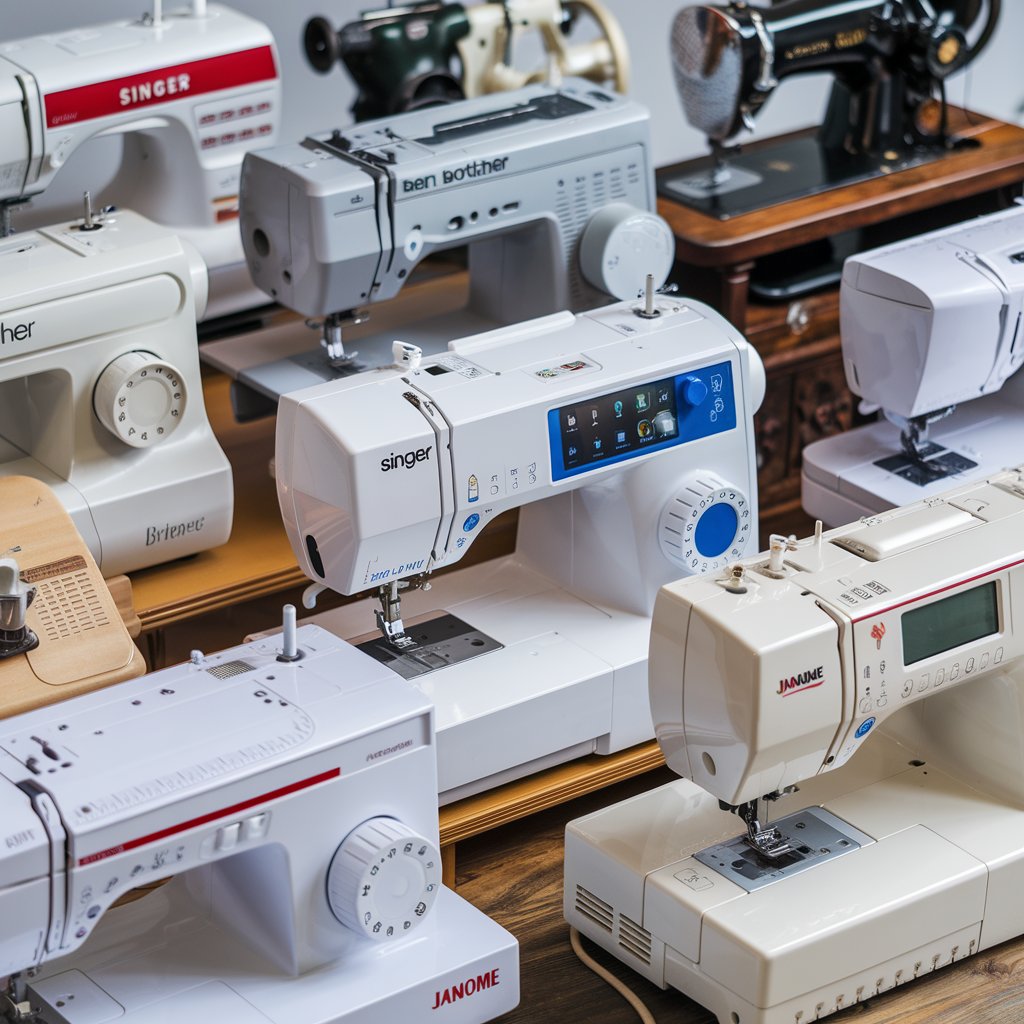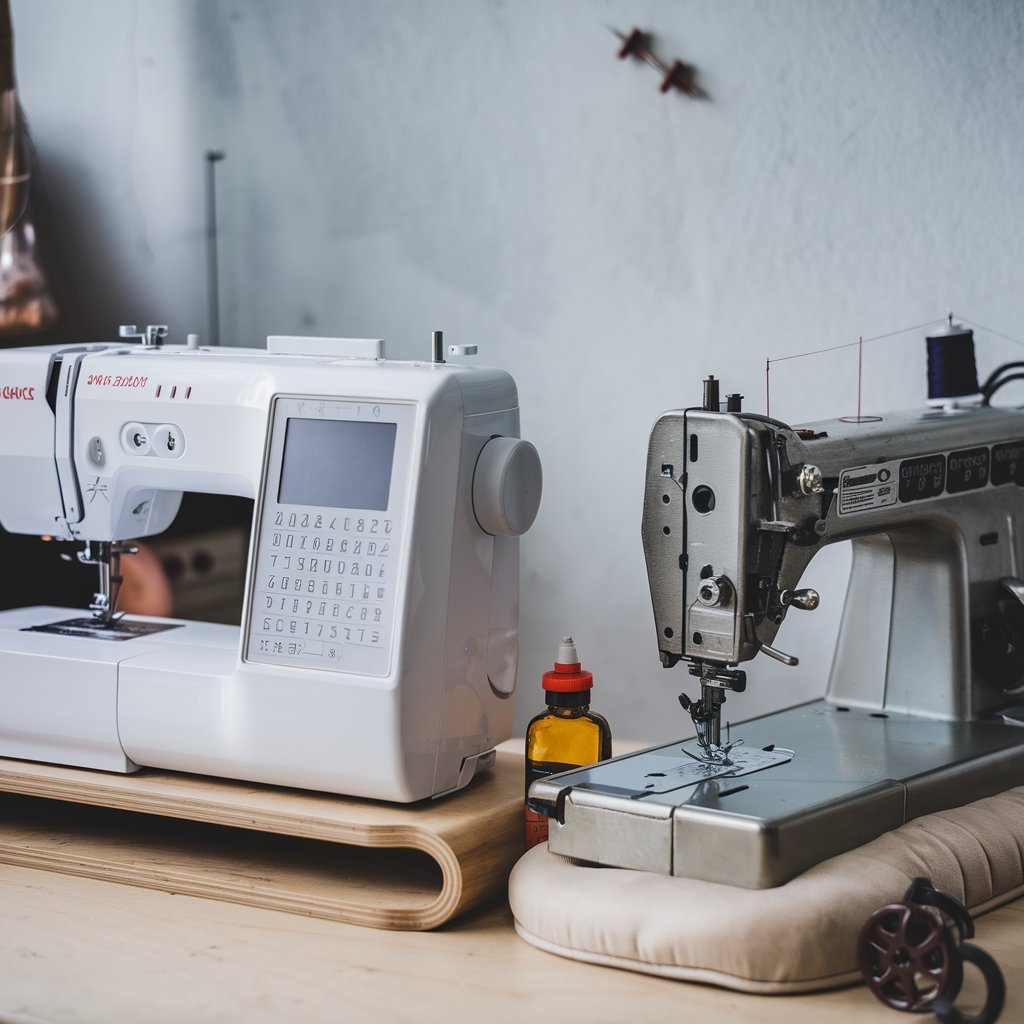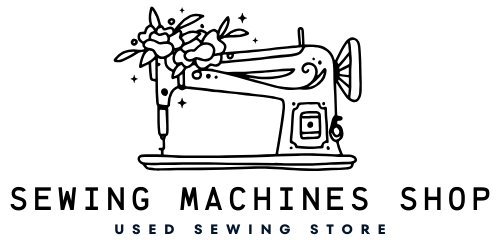
When it comes to choosing the right sewing machine, one of the most significant decisions you’ll face is whether to go with a traditional mechanical machine or a more modern computerized one. Computerized sewing machines, while packed with features and conveniences, are not without their drawbacks. In this article, we’ll explore the disadvantages of a computerized sewing machine, helping you make an informed decision before your next purchase at the Sewing Machine Shop.
Understanding Computerized Sewing Machines
Before diving into the disadvantages, let’s take a moment to understand what makes a computerized sewing machine unique. Unlike mechanical machines, which rely on manual controls, computerized machines use digital technology to automate many sewing functions. These machines often come with an array of pre-programmed stitches, automatic thread cutters, and even touch-screen displays.
Features of Computerized Sewing Machines
Computerized sewing machines are known for their advanced features. They often include dozens to hundreds of stitch patterns, automatic needle threading, and programmable settings for different types of fabric. These machines can save time and improve precision, especially for complex sewing tasks. However, these benefits come with a set of potential downsides that are worth considering.
How They Differ from Mechanical Machines
The primary difference between computerized and mechanical sewing machines lies in their operation. While mechanical machines use knobs and levers to adjust settings, computerized machines use digital interfaces and are often driven by computer chips. This difference introduces both advantages and challenges, particularly for those who may not be as tech-savvy.
Disadvantages of a Computerized Sewing Machine

While the technological advancements in computerized sewing machines offer many benefits, they also present several disadvantages that could impact your sewing experience.
Cost
One of the most significant disadvantages of a computerized sewing machine is the cost. These machines tend to be much more expensive than their mechanical counterparts.
- Initial Purchase Price: The upfront cost of a computerized sewing machine can be prohibitive for beginners or casual sewers. The added features and technology come at a premium, making these machines a significant investment.
- Ongoing Maintenance Costs: Computerized machines often require specialized maintenance and repairs, which can be costly. If a machine’s electronic components fail, repairs can be more expensive than those for mechanical machines.
Complexity
Another drawback is the complexity of computerized sewing machines, which can be daunting, especially for beginners.
- Learning Curve for Beginners: While these machines offer a lot of conveniences, they also come with a steeper learning curve. Navigating through digital menus, understanding the various settings, and troubleshooting issues can be challenging for those new to sewing.
- Troubleshooting and Repairs: When something goes wrong with a computerized machine, it can be more complicated to diagnose and fix the problem. Unlike mechanical machines, where issues are often easy to spot and repair, computerized machines may require professional assistance.
Dependency on Electricity
Computerized sewing machines are entirely dependent on electricity, which can be a significant disadvantage in certain situations.
- No Manual Backup Option: Unlike mechanical machines, which can often be operated without power, computerized machines are entirely reliant on electricity. If you experience a power outage or want to sew in a location without access to electricity, you’re out of luck.
- Energy Consumption: These machines can also consume more energy than mechanical models, especially if they have multiple features running simultaneously. This could result in higher electricity bills over time.
Limited Durability
Durability is another concern with computerized sewing machines, as the electronic components may not last as long as mechanical parts.
- Wear and Tear on Electronic Components: Over time, the electronic parts of a computerized sewing machine can wear out or malfunction. This is particularly true if the machine is used frequently or not properly maintained.
- Lifespan Compared to Mechanical Machines: In general, mechanical machines tend to have a longer lifespan than computerized ones. The simplicity of mechanical designs means fewer parts that can fail, contributing to their longevity.
Software Issues
Software-related problems can also be a significant drawback of computerized sewing machines.
- Software Glitches and Bugs: Like any computerized device, these machines can suffer from software glitches and bugs. These issues can disrupt your sewing projects and may require technical support to resolve.
- Need for Updates and Upgrades: As with any technology, the software in a computerized sewing machine may require updates or upgrades over time. This can be inconvenient and may even necessitate purchasing a new machine if the software becomes outdated.
Limited Customization
Finally, while computerized sewing machines offer a wide range of pre-set options, they can be limiting for more advanced users.
- Pre-Set Stitches and Designs: Many computerized machines come with a set number of stitch patterns and designs. While this may be sufficient for beginners, more experienced sewers may find the lack of customization frustrating.
- Lack of Flexibility for Advanced Users: If you’re someone who likes to experiment and create unique stitches or designs, you may find a computerized machine too restrictive. The reliance on pre-programmed options can limit your creativity.
Comparing Computerized and Mechanical Sewing Machines

When deciding between a computerized and a mechanical sewing machine, it’s essential to consider your specific needs and experience level.
Which is Better for Beginners?
For beginners, the choice between a computerized and mechanical machine can be tricky. While computerized machines offer many user-friendly features, the complexity can be overwhelming for those just starting.
Which is Better for Professionals?
For professionals, a computerized sewing machine may be the better option due to its advanced features and precision. However, the potential for software issues and the need for regular updates are factors that professionals should keep in mind.
Maintenance and Care for Computerized Sewing Machines
Proper maintenance is crucial for keeping your computerized sewing machine in good working order.
- Regular Maintenance Tips: To extend the life of your machine, follow the manufacturer’s guidelines for maintenance, including regular cleaning and lubrication. Avoid overloading the machine with heavy fabrics or using it for extended periods without breaks.
- What to Do When Something Goes Wrong: If you encounter issues with your computerized sewing machine, consult the user manual first. If the problem persists, it may be necessary to seek professional repair services.
Alternatives to Computerized Sewing Machines
If you’re hesitant about investing in a computerized sewing machine, there are alternatives to consider.
Mechanical Sewing Machines
Mechanical sewing machines are a reliable and often more affordable option. They offer simplicity and durability, making them a good choice for beginners or those who prefer a more hands-on approach to sewing.
Hybrid Sewing Machines

Hybrid machines combine elements of both computerized and mechanical designs. They offer some of the conveniences of computerized machines while retaining the durability and simplicity of mechanical models.
Is a Computerized Sewing Machine Right for You?
Deciding whether a computerized sewing machine is the right choice depends on several factors.
- Assessing Your Needs: Consider what you need from a sewing machine. If you require advanced features and are comfortable with technology, a computerized machine may be the right choice.
- Considering Your Budget: Keep in mind that computerized machines are more expensive, both in terms of initial cost and potential maintenance expenses.
- Evaluating Your Skill Level: If you’re a beginner, be prepared for a learning curve. If you’re an experienced sewer, think about whether the pre-set options will meet your needs or if you’d prefer the flexibility of a mechanical machine.
Conclusion
Computerized sewing machines offer many advantages, but they also come with a set of disadvantages that should be carefully considered before making a purchase. From higher costs and complexity to potential software issues and limited durability, these machines are not without their drawbacks. By weighing the pros and cons, you can determine whether a computerized sewing machine from the Sewing Machine Shop is the right choice for you.
FAQs
Are computerized sewing machines good for beginners?
Yes, but they come with a learning curve that may be challenging for complete beginners.
How long do computerized sewing machines last?
With proper maintenance, they can last several years, but they generally have a shorter lifespan than mechanical machines.
Can I use a computerized sewing machine without electricity?
No, they require electricity to operate.
What should I consider before buying a computerized sewing machine?
Consider your budget, skill level, and the types of projects you plan to work on.
How do I maintain a computerized sewing machine?
Regular cleaning, proper use, and following the manufacturer’s maintenance guidelines are essential.
Visit our Sewing Machine Shop for the best sewing machine deals.
For more insightful articles, visit our Medium page !

